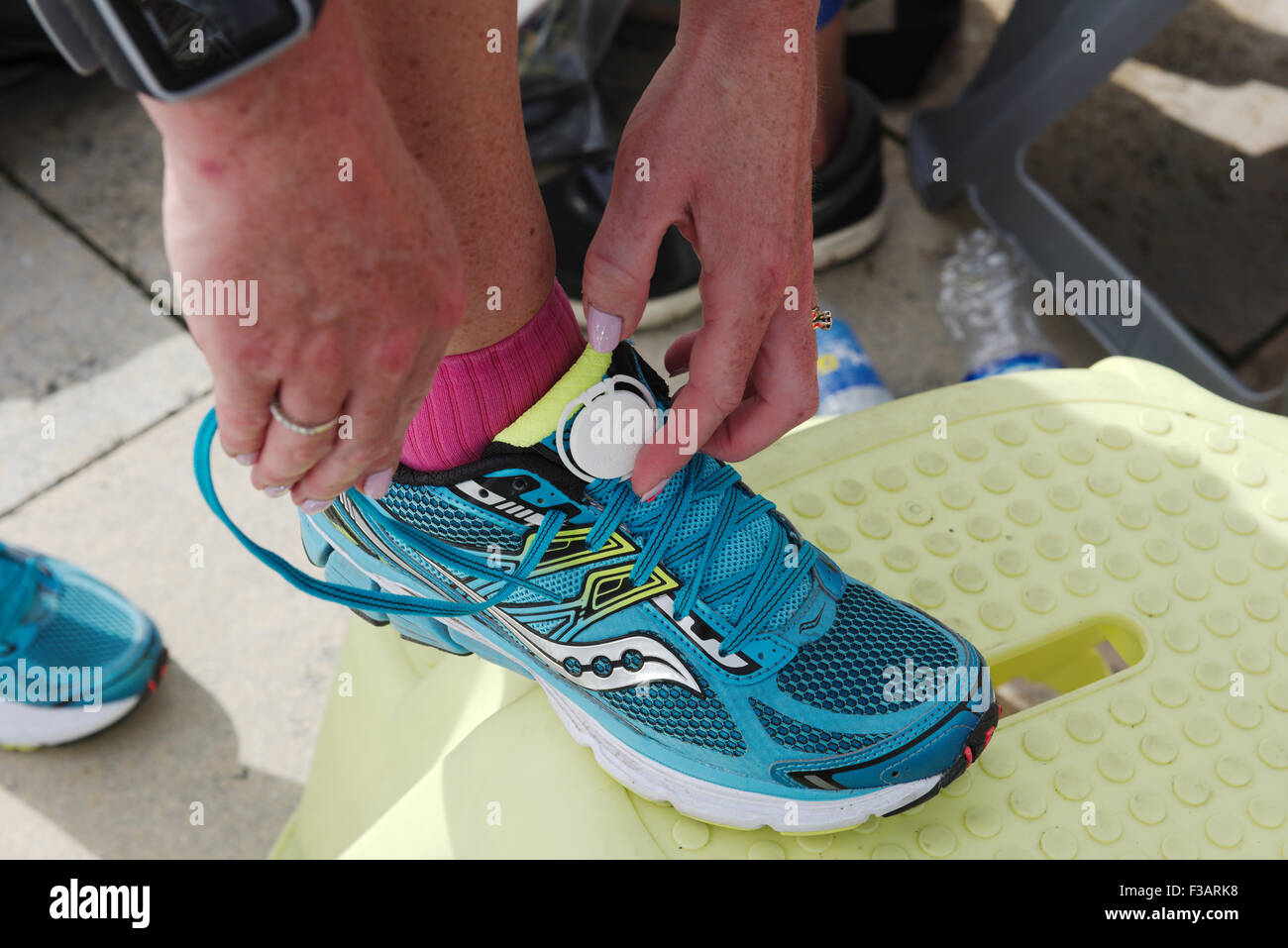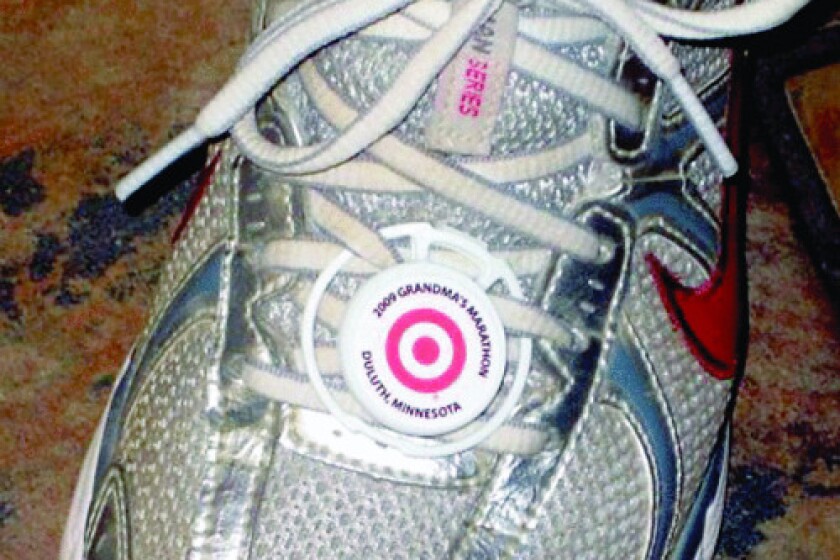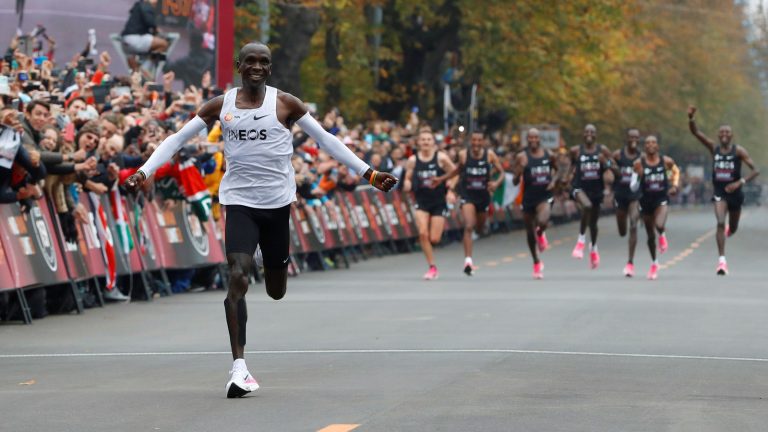Marathon Timing Chip
To marathon timing chip, securely fasten it on your shoe before crossing the starting line. Avoid damaging the chip.
Marathon timing chips play a crucial role in accurately tracking and recording a runner’s race performance. These chips are usually attached to the runner’s shoe and are used to provide precise timing data throughout the race. Properly securing the timing chip is essential to ensure accurate results and prevent any errors during the event.
We will explore the importance of marathon timing chips, how to properly attach them to your shoe, and tips for ensuring they function effectively on race day. Let’s delve into the world of marathon timing chips and discover how they make a significant impact on the sport of running.

Credit: www.alamy.com
Choosing The Right Marathon Timing Chip
Choosing the right marathon timing chip is crucial for accurately tracking your race performance. Whether you’re a seasoned runner or a beginner, selecting the appropriate timing chip is essential for ensuring precise timing and data collection. In this guide, we’ll explore the different types of timing chips available and the factors to consider when choosing the best one for your marathon.
Types Of Timing Chips
When it comes to marathon timing chips, there are primarily two types to consider: disposable chips and reusable chips.
- Disposable Chips: These chips are typically attached to the race bib and are discarded after the race. They are convenient for one-time use and do not require participants to return them post-event.
- Reusable Chips: Reusable timing chips are designed to be returned after the event. They are often provided in the form of ankle straps or bracelets and can be used for multiple races, making them a more sustainable option.
Factors To Consider
When selecting a marathon timing chip, several factors should be taken into account to ensure it aligns with your specific race needs.
- Accuracy: Look for a timing chip that offers high accuracy to capture your race performance with precision.
- Compatibility: Ensure the timing chip is compatible with the race’s timing system to avoid any technical issues on race day.
- Comfort: Opt for a timing chip that is comfortable to wear throughout the marathon, minimizing any potential distractions.
- Reliability: Choose a timing chip from a reputable provider to guarantee reliable performance and data recording.

Credit: alwaysafirsttime.wordpress.com
Preparing Your Timing Chip
Preparing your timing chip is crucial for a successful marathon experience. Properly attaching and testing the chip ensures accurate tracking of your race time. Follow the steps below to get your timing chip ready:
Attaching The Chip
- Carefully read the instructions provided with the timing chip.
- Secure the chip to your shoe following the recommended method.
- Double-check that the chip is firmly attached to avoid any displacement during the race.
Testing The Chip
- Do a test run with the timing chip to verify it records your time accurately.
- Ensure the chip registers each milestone or marker along the route.
- If there are any issues, contact the event organizers before the race.
By properly preparing your timing chip, you can focus on your marathon performance without worrying about timing inaccuracies.
Using The Timing Chip On Race Day
On race day, maximize your marathon performance with the timing chip. This essential tool accurately tracks your time, providing valuable data for analysis and improvement. Level up your running game with the marathon timing chip.
Wearing The Timing Chip
Secure the timing chip to your running shoe with the provided tie—tighten it to prevent loses while running.
Passing Through Timing Mats
Run over the timing mats without stopping to ensure accurate recording of your race time.

Credit: m.youtube.com
Proper Care And Storage Of The Timing Chip
Proper care and storage of the timing chip is crucial to ensure accurate race timing and longevity of the chip. Your timing chip is a valuable piece of equipment that needs to be handled with care to maintain its functionality. In this section, we will discuss the best practices for removing, cleaning, drying, and storing your timing chip for future use.
Removing The Chip
To remove the timing chip, gently peel it off your shoe or race bib without causing any damage. It’s important to avoid bending, snapping, or applying excessive force as this can impair its functionality. Take care to remove any adhesive residue from your gear, as this can affect the performance of the chip during future races.
Cleaning And Drying
After removing the chip, it’s essential to clean it with a mild detergent and water to remove any dirt or debris that may have accumulated during the race. Gently pat the chip dry with a soft cloth, ensuring it’s completely free of moisture before storage. Avoid using harsh chemicals or abrasive materials that could damage the chip’s delicate components.
Storing For Future Use
Store the timing chip in a cool, dry place away from direct sunlight or extreme temperatures. Consider using a small plastic container or zip-lock bag to protect it from dust and moisture. Label the container with the date of use to keep track of its age and performance for future races. By following these simple care and storage guidelines, you can ensure your timing chip remains in optimal condition for accurate timing in your upcoming marathons.
Troubleshooting Common Timing Chip Issues
Learn how to troubleshoot common timing chip issues that may arise during marathons. Ensure a smooth running experience by addressing potential problems and implementing effective solutions. Gain valuable insights on optimizing marathon timing chip performance.
Malfunctioning Chips
One of the common issues encountered during marathon timing chip usage is a malfunctioning chip. When your timing chip malfunctions, it can be frustrating and may lead to inaccurate timing or even no timing recorded at all. To troubleshoot this problem, follow these simple steps:
- First, ensure that the chip is securely fastened to your shoelaces or race bib. Sometimes, if the chip is loose, it may not register your movements correctly.
- If the chip is correctly attached and there are still issues, try resetting the chip. This can be done by gently tapping the chip or removing the battery if applicable, waiting for a few minutes, and then reinserting the battery.
- In some cases, the malfunction may be due to the chip being old or damaged. If this seems to be the case, contact the race organizer to get a replacement chip.
Lost Or Damaged Chips
Another issue that marathon runners may face is losing or damaging their timing chips. Losing or damaging your chip can be a cause for concern, as it may affect your official race time. If you find yourself in this situation, here’s what you can do:
- If you have misplaced your chip but the race hasn’t started yet, inform the race organizer immediately. They may be able to provide you with a replacement chip.
- In the unfortunate event that your chip gets damaged during the race, try to retrieve any remaining pieces and notify a race official as soon as possible. They will guide you on the necessary steps to rectify the issue.
Contacting The Race Organizer
If you encounter any timing chip issues that cannot be resolved on your own, it’s crucial to reach out to the race organizer for assistance. They have experience dealing with such problems and can provide you with the necessary support. Here are some ways to contact them:
- Look for contact information on the race website. Most races have a dedicated contact section where you can find phone numbers, email addresses, or online inquiry forms.
- Try reaching out through the official race social media accounts. Sometimes, race organizers actively engage with participants on platforms like Facebook or Twitter.
- Consider contacting the race organizer before the event to inquire about any timing chip-related concerns. This proactive approach can help you avoid last-minute stress or unexpected issues.
Frequently Asked Questions Of How To Marathon Timing Chip
How Does A Marathon Timing Chip Work?
A marathon timing chip uses radio-frequency identification (RFID) technology to record a runner’s accurate start, finish, and intermediate times.
Where Should I Attach My Marathon Timing Chip?
Attach your marathon timing chip to your shoe using the provided straps or adhesive. Avoid placing it near metal objects or high-impact areas.
Can I Reuse My Marathon Timing Chip For Multiple Races?
Most marathon timing chips are disposable and can only be used for a single race. Check with the race organizers for instructions on returning or recycling the chip.
Conclusion
Understanding how to properly use a marathon timing chip is crucial for every runner. By following the steps outlined in this guide, you can ensure accurate race timing and a more enjoyable marathon experience. Don’t overlook the importance of your timing chip – it can make a significant difference in your race performance.






